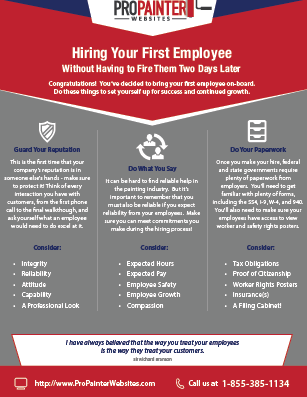Secret Seasonal Considerations For Commercial Exterior Paint: What You Required To Be Enlightened Concerning
Secret Seasonal Considerations For Commercial Exterior Paint: What You Required To Be Enlightened Concerning
Blog Article
Material Develop By-Doherty Chaney
When you're intending a business exterior paint job, seasonal factors can make or damage your results. You'll want to consider how temperature and moisture influence paint application and drying out times. Selecting the appropriate period can guarantee your paint sticks correctly and lasts much longer. But which seasons are truly the most effective for this kind of job? Allow's check out the key elements that can impact your project's success.
The Influence of Temperature on Paint Application
When you're preparing an industrial external paint job, the temperature can significantly affect how well the paint adheres and dries.
Ideally, you want to repaint when temperatures range in between 50 ° F and 85 ° F. If it's too chilly, the paint might not heal properly, resulting in problems like peeling or cracking.
On the other hand, if it's as well warm, the paint can dry as well rapidly, protecting against correct adhesion and leading to an irregular coating.
You must also consider the time of day; morning or late afternoon provides cooler temperature levels, which can be a lot more positive.
Always check the maker's suggestions for the particular paint you're making use of, as they commonly offer assistance on the suitable temperature level array for optimum results.
Humidity and Its Result on Drying Times
Temperature isn't the only environmental element that affects your commercial external painting project; humidity plays a significant role as well. High moisture levels can slow down drying out times drastically, influencing the overall high quality of your paint task.
When the air is filled with wetness, the paint takes longer to treat, which can result in issues like inadequate attachment and a higher danger of mildew growth. If you're repainting on a particularly humid day, be gotten ready for prolonged delay times in between coats.
It's essential to keep an eye on local climate condition and plan as necessary. Ideally, aim for humidity levels between 40% and 70% for optimum drying.
Maintaining these consider mind ensures your task stays on track and supplies a long-term coating.
Best Seasons for Commercial Exterior Painting Projects
What's the very best time of year for your industrial outside paint jobs?
Springtime and very early fall are normally your best bets. Throughout these periods, temperatures are mild, and moisture levels are commonly lower, creating optimal problems for paint application and drying.
Avoid summertime's intense heat, which can create paint to dry also swiftly, resulting in poor bond and coating. Similarly, winter months's chilly temperatures can prevent appropriate drying and healing, risking the longevity of your paint work.
Aim for days with temperatures between 50 ° F and 85 ° F for optimal results. Remember to inspect the regional weather prediction for rain, as damp conditions can destroy your task.
Preparation around these factors guarantees your paint task runs efficiently and lasts much longer.
Verdict
To conclude, intending your industrial outside painting projects around seasonal factors to consider can make a significant distinction in the outcome. By organizing manufacturing facility painting throughout the perfect temperature levels and humidity levels, you'll guarantee far better adhesion and drying times. Keep in mind to keep an eye on regional weather report and choose the correct time of year-- springtime and very early loss are your best choices. Taking https://www.dirt.com/gallery/more-dirt/real-estate-listings/painted-lady-house-san-francisco-1203561930/ will certainly help you achieve a resilient and expert surface that lasts.
